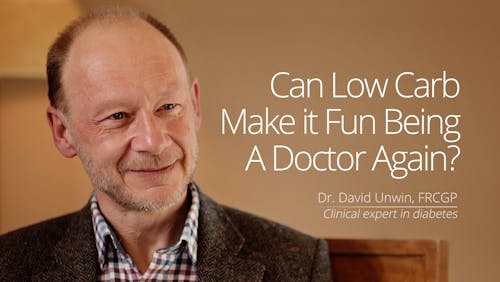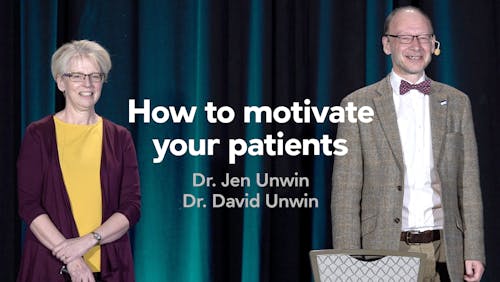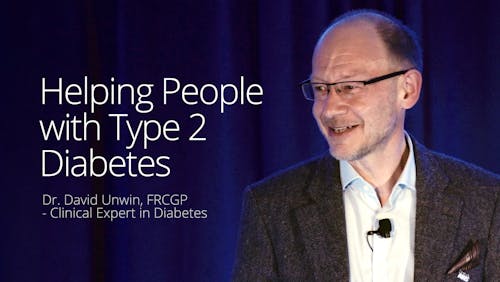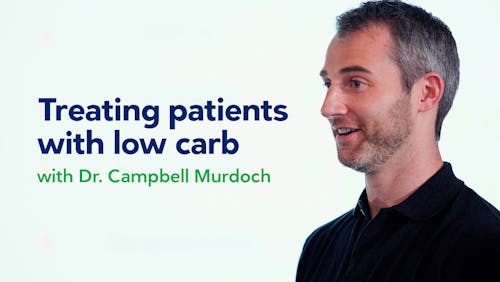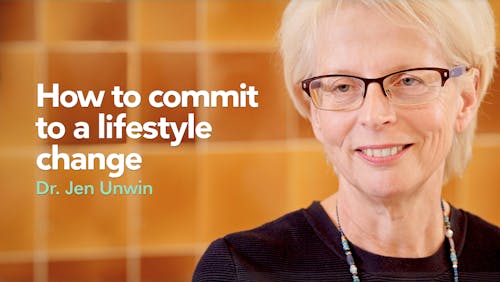Low carb for doctors with Dr. David Unwin
Part 1
12,009 views Add as favorite
The course will cover very practical tips for doctors, like how to effectively discuss the low-carb lifestyle with patients, how to handle medications, safety, patient motivation and much more.
We hope this will encourage even more doctors to learn how to use low carb in a simple, safe and effective way to empower their patients. For Dr. Unwin it not only helped his patients and saved money for his clinic, it made being a doctor feel rewarding and meaningful again.
Table of contents
0:28 Started using low carb in 2012
1:52 The purpose of these short videos
Part 2
5,635 views Add as favorite
Table of contents
0:12 Who would be the best candidates?
1:10 “You’ve got type 2 diabetes”
1:30 The golden opportunity – offering an alternative
Part 3
4,054 views Add as favorite
Table of contents
0:11 Resolving other problems beyond weight loss
1:24 Skin problems
Part 4
5,635 views Add as favorite
Table of contents
0:15 Evidence for the low-carb approach
0:23 Low-carb was the accepted way to treat diabetes
1:09 A growing number of doctors advising low carb for diabetics
Full low carb for doctors guide
Part 5
2,847 views Add as favorite
Table of contents
0:30 How to bring up obesity with a patients
2:00 “Yes, this is something I want to discuss”
Part 6
3,872 views Add as favorite
Table of contents
0:22 “Is there much sugar in your diet?”
1:26 “Oh, I have two bananas for breakfast.”
2:08 Carbohydrates turn to sugar
3:51 Replace white with green
5:03 Who is doing the shopping and cooking?
5:38 Clarification about sugar
Part 7
3,907 views Add as favorite
The glycemic index predicts how much glucose you are going to absorb into your blood, compared to pure glucose. Brown bread has a higher glycemic index than table sugar. The teaspoon equivalent makes it easier to see how much a food raises blood sugar. For example, 150 g boiled rice will raise blood sugar as much as 10 teaspoons of sugar will do.
Table of contents
0:19 The glycemic index predicts how much glucose you are going to absorb
1:00 Brown bread has a higher glycemic index than table sugar
1:43 The teaspoon equivalent system
3:00 Using the teaspoon equivalent to explain to patients
3:30 150 g boiled rice raises blood sugar as much as 10 teaspoons of sugar
Part 8
1,956 views Add as favorite
In the eight part of our low carb for doctors series, Dr. Unwin explains how doctors can help motivate patients.
Table of contents
0:30 Behavior changes and the importance of motivation
1:38 What is the patient hoping for?
3:28 Reflecting on results
4:17 Giving feedback
5:52 Patient Andrew
Part 9
2,089 views Add as favorite
This can include getting a baseline weight, waist circumference, blood pressure and various metabolic measurements, like lipids, HbA1c and more. You usually see great results in many areas, including liver function.
Table of contents
0:16 Get baseline measurements
1:26 Home monitoring
3:41 Lipids and TSH improving
5:33 Record keeping
Part 10
2,939 views Add as favorite
Table of contents
0:06 Baseline measurements and patients’ hopes
1:34 Explain what the patient should expect
3:19 A special word about Amlodipine
3:47 Summary
4:25 Dr. Unwin’s own experience
Part 11
2,127 views Add as favorite
Table of contents
0:06 Patients on metformin
2:25 Patients on gliclazide
3:13 Patients on insulin and other medications
Part 12
3,277 views Add as favorite
Table of contents
0:06 Few side effects
0:40 Tiredness 1:31 Muscle cramps
1:53 Constipation 2:26 Transient problems
3:14 Positive side effects
Part 13
5,010 views Add as favorite
Table of contents
0:06 Cholesterol is sofisticated
2:45 Hyper-responders – patients whose cholesterol increases significantly
Part 14
1,458 views Add as favorite
Table of contents
0:06 Starting small
0:55 Do low carb yourself and be an example
Part 15
2,511 views Add as favorite
Table of contents
0:06 Keeping a food diary
1:58 Go back to the patients’ goals
2:44 Intermittent fasting
4:16 Activity and exercise
4:37 Revisiting the diet
Part 16
2,168 views Add as favorite
Table of contents
0:06 Working with patients
About the video
Recorded in Manchester, England. Published in October 2017.
Host: Dr. David Unwin
Production coordinator: Dr. Andreas Eenfeldt
Camera and sound: Giorgos Chloros and Simon Victor
Editing: Simon Victor
Related videos
More courses
















